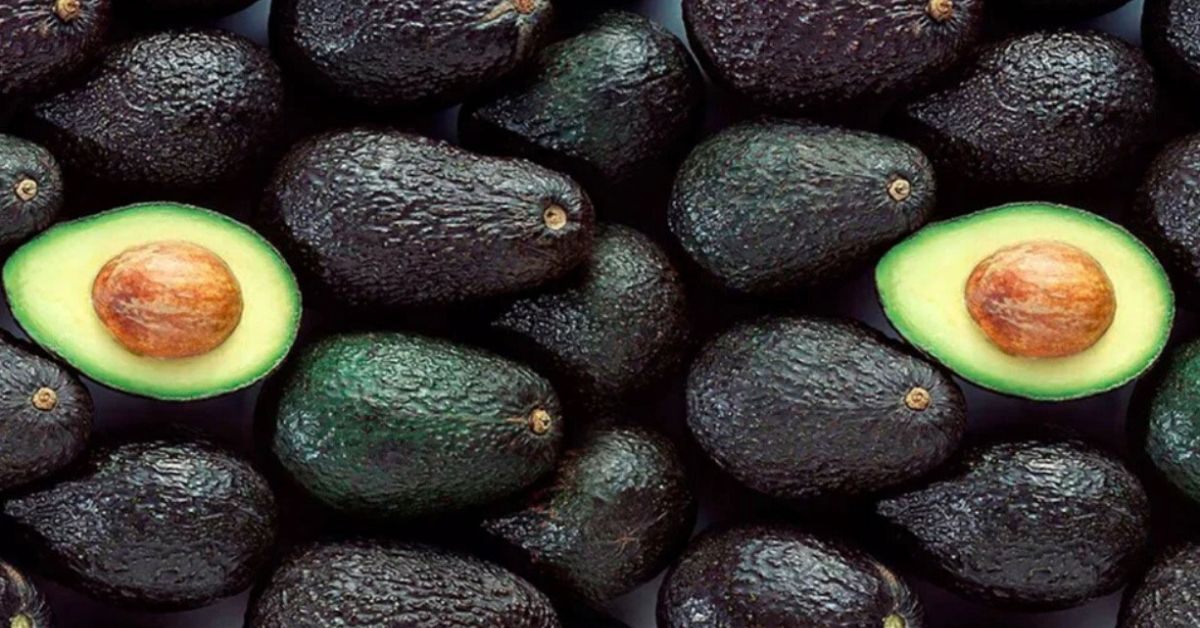The avocado is a fruit, rich in fiber, that reduces blood sugar and the risk of many diseases. Also, avocado is low in cholesterol and triglycerides and contains vitamins K, C, B5, B6, and E, potassium, and folic acid. It is also rich in lutein and zeaxanthin, important for eye health.
With so many nutrients and properties, this fruit has perhaps only one disadvantage: once peeled, it does not last long. And the first thing that draws attention, when we keep one half in the refrigerator, is the black color that it begins to acquire rapidly.
Like other fruits, such as apples, the avocado oxidizes. What is the reason behind this sudden darkening? Can’t we keep our avocados from turning blacker than coal?
The truth is that there are some homemade tricks that allow us to avoid the degradation of the avocado.
First of all, you have to know that the process behind the color change of many vegetables is known as enzymatic browning .“Browning” comes from the darkening or color change caused in the food and “enzymatic” from the word “enzyme”.
The enzymes involved in the enzymatic browning reactions that affect avocado and other fruits are called polyphenol oxidases or tyrosinases. These molecules intervene in the oxidation reactions that take place on the cut surface of the food, altering its color and causing a loss of organoleptic quality.
In itself, this color change does not create a health hazard, but it does weaken the integrity of the fruit. That’s why enzymatic browning is a phenomenon that is fought against in the food industry. To inhibit its appearance, factors such as temperature, pH, or oxygen are played with.
The ripening point of the avocado affects its subsequent oxidation: if the avocado is riper, then it means that its shelf life is shorter. There may also be a weight loss in avocado associated with a higher concentration of its fats. All this happens because the avocado continues to breathe after harvesting. And it does so through the production of ethylene: a plant hormone fully involved in the changes in the fruit after harvest.
“The avocado is a fruit that is characterized by having a very low proportion of carbohydrates and a high amount of fat. The peculiarity of them is that they are preferably intrinsic since they come from whole foods, such as nuts, and chia seeds. Many times, the concept of “fat” is associated with unfavorable aspects of health or our body. Nevertheless, the contribution of fats from this fruit is healthy because it provides monounsaturated fatty acids, important for our body and is also rich in vitamin E, C and minerals such as potassium”, says María del Rosario Belossi, a graduate in nutrition (MN: 10609), a specialist in sports nutrition and plant-based nutrition.
“But Avocados, like any other fruit, have a short shelf life. We get used to food lasting much longer in the refrigerator or out of it, and generally, this longer preservation is due to the increase in chemical products that the industry often uses to improve them or make them more durable,” adds Belossi.
5 tricks to prevent the avocado from turning black inside
A squeeze of lemon
After cutting it in half, add a squeeze of lemon to the middle of the leftover avocado that you want to keep. Lemon acid lowers the pH, inhibiting the activity of the polyphenol oxidase enzyme responsible for oxidation and therefore takes longer to darken.
“Lower the pH of the food. pH is the measure of acidity that a compound can have. Lemon is one of the foods that have a low pH, which is why by adding a few drops of lemon, we lower the pH of the avocado and prevent the activity of polyphenol oxidase (PPO) from starting to “work” quickly and in this way, we slow down the enzymatic activity. You shouldn’t put a lot of it, because the enzyme would be completely denatured and the food product would be spoiled”, explains Belossi.
No to heat
Heat inactivates the enzyme polyphenol oxidase: it is the method used in the food industry to make preserves, for example, by immersing fruits in very hot water above 100ºC.
Yes to the cold, but not too much
At the other extreme, we find the cold. The very conservation of the avocado in the refrigerator helps to slow down the activity of the polyphenol oxidase enzyme. So do not forget to keep the half avocado cold. Also for food safety, this reduces the proliferation of possible pathogenic microorganisms.
Plastic wrap works
“Although this option is not 100% effective, if we cover the fruit with paper (as long as it is harmless), we are removing the oxygen (gas used by the enzyme to produce browning). If we cover it hermetically, we try to keep it out of contact and browning takes place more slowly,” explains Belossi.
The ultimate trick: a Tupperware with water
It is the most effective to preserve the avocado in optimal conditions and consists of introducing one of its halves into a container with water. In this way, the surface will not be in contact with the oxygen in the air and you will avoid its deterioration.
Of course, at most, it lasts 2 to 3 days in the refrigerator. “With this alternative, it is about achieving a decrease in temperature to reduce the action of the PPO enzyme. In addition, an attempt is made to place the cut side of the avocado on the water to reduce the contact surface with oxygen. And if we also add a squeeze of lemon, we double the preservative effect”, says Belossi.
And the expert closes: “These tools are not magical. They only slightly diminish the action of the enzyme’s effect. But the most natural thing that can happen is that if the fruit is exposed to oxygen, it generates that typical brownish color of the avocado. If the fruit is stored for many days, it is not ideal to consume it because it may have lost its properties or denatured its enzymes, generating unappetizing flavors.
An avocado a day, the secret formula
A study involving researchers from five universities found that eating an avocado a day for six months led to a slight decrease in unhealthy cholesterol levels. In addition, as a counterpart, they observed that the daily incorporation of this fruit had no effect on abdominal fat, liver fat, or waist circumference in overweight or obese people.
In a randomized trial, the team also found that participants who ate avocado had better quality diets during the study period.
While previous smaller studies had found a relationship between eating this fruit and lower body weight, body mass index (BMI), and waist circumferences, this was the largest and most extensive study to date on the effects of avocados on health, including a large number of participants and the length of work.
Among their findings published in the Journal of the American Heart Association, the authors noted that “although avocados did not affect abdominal fat or weight gain, the study still provides evidence that they may be a beneficial addition to a well-balanced diet.” Penny Kris-Etherton is a professor of nutritional sciences at Evan Pugh University at Penn State, one of the study participants, noting that “the addition of one avocado per day in this study did not cause weight gain and also caused a slight decreased LDL cholesterol, which are important findings for better health.”
The avocado is a fruit, rich in fiber, that reduces blood sugar and the risk of many diseases. Also, avocado is low in cholesterol . . .












